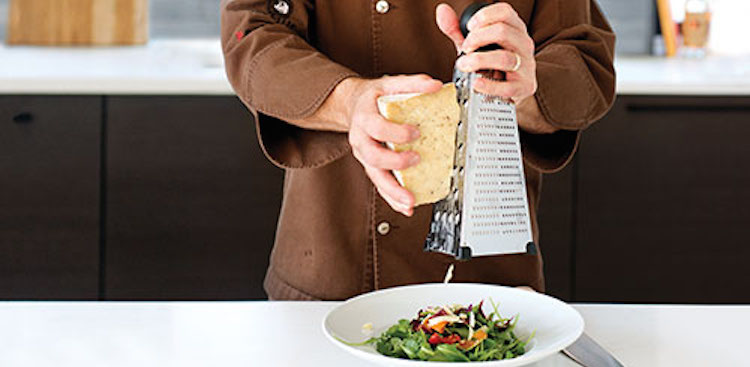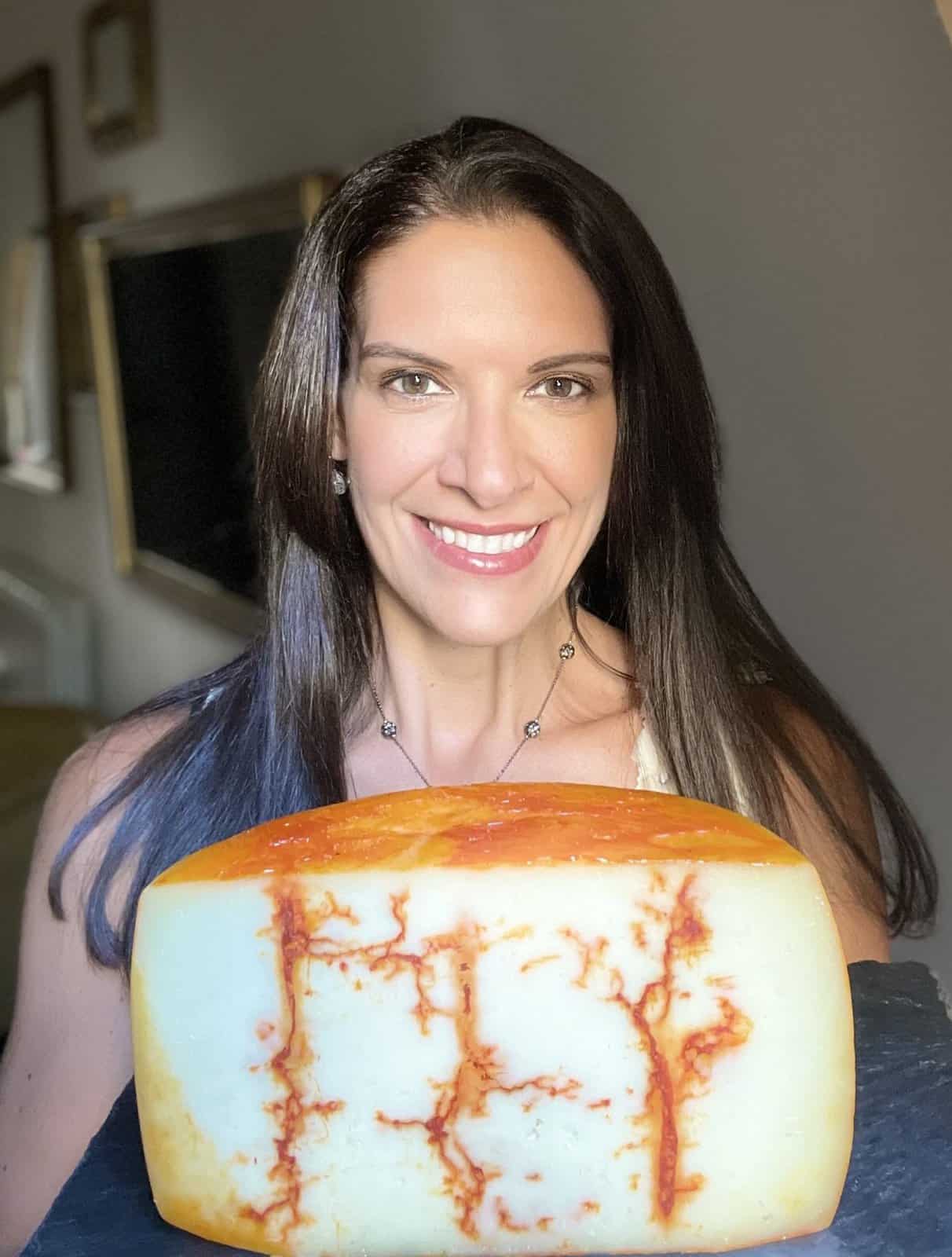
Beecher’s Handmade Cheese founder and chef Kurt Beecher Dammeier developed his love for cheese at a young age. He recalls eagerly gobbling up hunks of cheddar, Stilton, and provolone at his grandparents’ house when he was a child, and he experienced a “cheese awakening” during a trip to Europe as a high school student. But it wasn’t until later in life that he got into the business of making and selling cheese. He’d been working at his grandfather’s printing company for 18 years when the family decided to sell the business.
“At age 38 I got to start a new career with a couple of coins in my pocket,” he says. “And I decided the second chapter would be all about passion.”
For Dammeier that translated to food, and more specifically cheese. He opened Beecher’s Handmade Cheese in Seattle’s Pike Place Market in 2003, after taking a cheesemaking course at Washington State University and ultimately hiring an experienced Oregon cheesemaker. “Before we opened we bought samples of every cheese we could find in the entire city. We tasted each one and talked about the pluses and minuses of making cheeses like that.” They chose to model their signature cheese directly on Cougar Gold, a rich white cheddar made by Dammeier’s alma mater, Washington State University. The result was Beecher’s Flagship, a nutty, semi-hard cow’s milk cheese that’s a cross between cheddar and Gruyère. It remains the most popular cheese sold at Beecher’s today, although the peppery, open-air-aged Marco Polo Reserve is one of Dammeier’s personal favorites and a regular first-place winner at the annual American Cheese Society Judging & Competition. These are just two of 17 varieties of cheese produced by Beecher’s at Pike Place Market and a second store and restaurant in New York City, opened in 2011. Both locations have glass-enclosed cheesemaking facilities so customers and passersby can watch the process firsthand.
“For many people it’s the first time they’ve seen – or even thought about – how cheese is made. Everybody knows the nursery rhyme words ‘curds’ and ‘whey,’ but most have no idea that’s from cheesemaking,” says Dammeier. “We want to educate people and get them thinking about how all their food is made.”
To that end, in 2004 he founded the Beecher’s Pure Food Kids Foundation (originally called the Beecher’s Flagship Foundation) with the aim of teaching kids about food additives and empowering them to make informed, healthy food choices for life. The foundation has since developed a program of nutrition education and cooking workshops for fourth- and fifth-grade students in Seattle and New York City, and has reached over 56,000 kids since 2006. “Our goal is to change the way America eats, and our base strategy is to try to spark interest in fourth and fifth graders and use them as the Trojan horse into the home and pocket- book, ultimately changing the demand for unhealthy food, which will, of course, change the supply.”
Dammeier’s commitment to pure food is also evident at Beecher’s. The stores carry only foods that are free of artificial preservatives, flavor enhancers, and colors, and their own cheeses are handmade with milk from Holstein and Jersey cows that have not been treated with growth hormones. In addition to proprietary cheeses, the stores sell a rotating array of exclusively American cheeses. “In 2003 it wasn’t easy to find 75 to 85 great American cheeses to sell,” Dammeier says. But now the opposite problem occurs: “In 2014 it’s painful to make the selection amongst the 500 cheeses you’d like to sell.”
When it comes to incorporating cheese into cooking, Dammeier likes to use it in varying degrees depending on the dish. “I like it to be a seasoning, or an ingredient even at levels that are not perceptible as cheese, just to build that umami background,” he says. “It’s almost like a bass note in a song.”
He also believes cooking with cheese shouldn’t be fussy. “Good food is all about balance. I’m pretty particular about what I eat, and I don’t like to waste a single bite of food on nastiness. I’ll stay hungry while I search for something good to eat. But that doesn’t always mean fancy; it just means real.” He adds, “For me cheese is not like wine – sniff it and talk a ton about it. It’s just eat it and go, ‘Yeah, this is good.’ It’s more about the story behind the cheese.”
Beecher’s Breakfast Strata

This breakfast strata has everything a strata should: a crusty brown top, a creamy center, and savory, full flavors.






